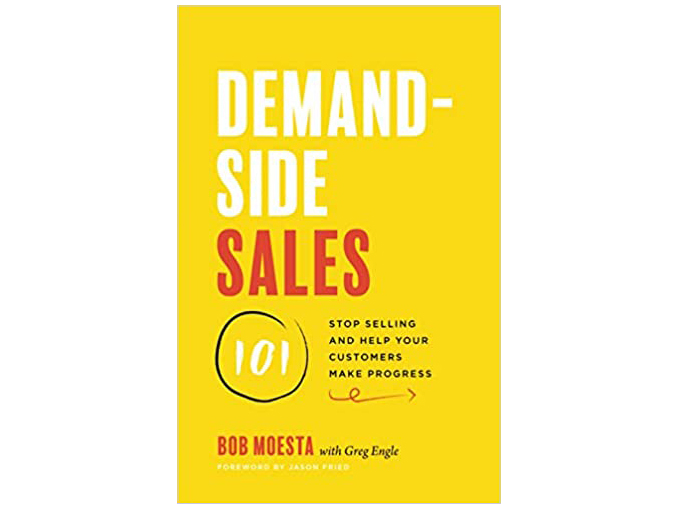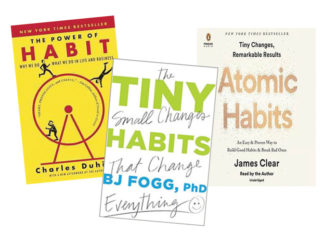by Bob Moesta with Greg Engle, Lioncrest Publishing 2020
Demand-Side Sales 101: Stop Selling and Help Your Customers Make Progress, by Bob Moesta with Greg Engle, is a terrific new book about practical and applied “Jobs to Be Done” (JTBD) theory, which is a powerful framework and methodology that has been popularized in recent years. The ideas in this slim volume are incredibly valuable and can be applied equally well to sales as well as other areas such as product strategy and marketing. Moesta and Engle are cofounders of the Re-Wired group, a design research firm. Moesta codeveloped JTBD theory with the late Harvard Business School professor Clayton Christensen.
Moesta and Engle begin with an overview of supply-side versus demand-side selling, the latter of which is the focus of this book. They advocate demand-side selling, in which the focus is on discovering a customer’s “struggling moment” and understanding what progress they are trying to make in their lives and how a product can help them. This moves solidly away from “push-based” selling and marketing based on arbitrary demographics. As Clayton Christensen is quoted in the book, “Just because I am 55, live in this zip code and have that income, it does not cause me to buy The New York Times today.”
Instead, the “Jobs to Be Done” approach is all about detecting the “energy” in a customer interview that identifies their key struggle. From there, it is a matter of understanding what product or service can solve that struggle better than what the customer is using today. In other words, they “hire” the new product and “fire” their old solution, based on decision criteria that are elicited as part of the JTBD process. The JTBD approach rather quickly gets to the heart of what motivates buyers. Moesta and Engle use Snickers as an example: when research found that the “job” Snickers is hired for is not to provide a sweet treat, but rather to satisfy hunger and provide a quick boost of energy, they reframed their marketing to reflect this understanding, and sales went to more than $3 billion in less than ten years.
The subsequent chapters in the book describe the JTBD approach, which begins with deep understanding of the customer and their current struggle. Chapters 2 and 3 present frameworks for demand-side selling, and Chapter 4 presents a set of foundational interviewing tips followed by several play-by-play examples of JTBD interviews with customers in several case studies. By the end of Chapter 4, readers should be convinced that JTBD interviews are a useful component of any qualitative researcher’s toolkit, because they efficiently and reliably get at the heart of customer decision-making and the events that lead them to bring new products into their lives. In this reviewer’s experience, the technique works so well as to be almost magical in its power.
Chapter 5 demonstrates how to map JTBD interview results onto the buying timeline from first thought to passive looking, and active looking all the way through to ongoing use. Subsequent chapters reinforce the ideas already covered and how the demand-side sales and JTBD relates to customer support and marketing. Throughout the book, if you substitute the word “product” for “sales”, you’ll also get plenty of insights for product development.
Those looking for additional reading, particularly reading pertaining to product development, may also enjoy When Coffee and Kale Compete by Alan Klement, which was published in 2018, as well as articles by Ryan Garner on his blog Humanising.co. Together, these three resources will provide you with a solid foundation in “Jobs to Be Done” theory and interviewing techniques.
If your struggle or “Job to Be Done” is eliciting insights from customers reliably in order to learn about customer motivations and the drivers of demand, you’ll find much of the solution to your struggling moment in Moesta and Engle’s new book.
“Demand is only generated by a customer’s struggling moment. If there is no struggle, there is no demand.”
—An excerpt from Demand-Side Sales 101: Stop Selling and Help Your Customers Make Progress





Be the first to comment